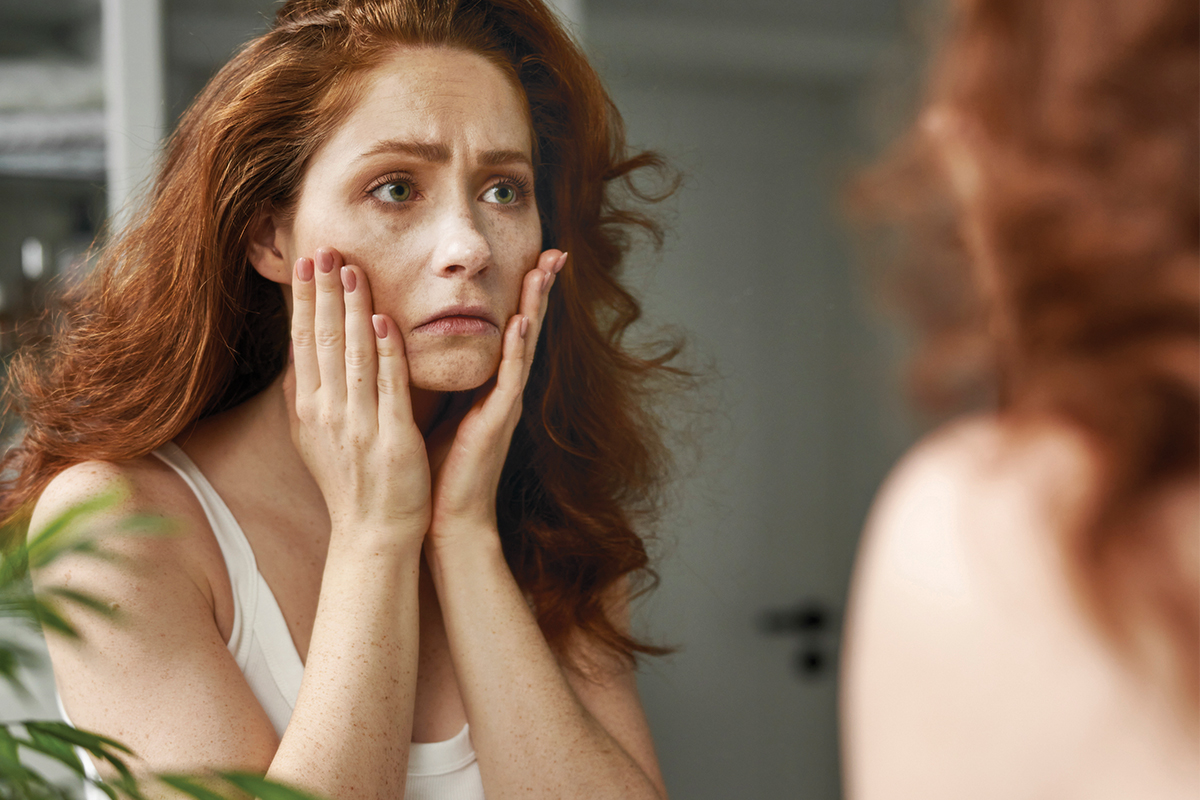
5 minute read
Understanding Body Dysmorphia
FACT VS. FICTION
By Ali Lemmons
Body dysmorphic disorder (BDD), also referred to as body dysmorphia, is a mental health condition that negatively affects how individuals view and think about their own bodies and appearances. According to Johns Hopkins Medicine, experts estimate that 1 in every 100 people suffer from BDD. Despite being a common issue, body dysmorphia is often misunderstood. Here, we’ll separate the facts from the fiction with insight from experts in the community.


Fiction: Body dysmorphia is an eating disorder.
While the two conditions may share similarities, body dysmorphia is not classified as an eating disorder. Whereas eating disorders are characterized by disrupted behaviors surrounding food, body dysmorphia is characterized by obsessive, repetitive thoughts and behaviors related to perceived appearance flaws. “Typically, these flaws are minor or even nonexistent, but to the individual, it feels significant, distressing, and is disruptive to their daily life,” says Cindy Urrutia, clinical director at Family and Friends Counseling. “I define BDD as being so distraught by your body that it drives your will to live and your ability to function as a member of society,” says Laura Priest, psychiatric-mental health nurse practitioner at Vitruvian Health. “You are unable to live a ‘normal life.’ BDD is much worse than low self-esteem and body dissatisfaction, it is debilitating – which is why it is a mental illness and not a symptom.” However, individuals who suffer from body dysmorphia are more likely to develop an eating disorder, as well as other mental health conditions like anxiety, depression, and obsessive-compulsive disorder.
Symptoms of Body Dysmorphia
Spending excessive time thinking about your body and perceived “flaws”
Feeling compelled to repeatedly check your appearance
Fear and anxiety that others are judging your body
Feeling shame and disgust about your body and appearance
Compulsively grooming (pulling hairs, picking at skin, and more)

Fiction: Body dysmorphia just goes away as you age.
Individuals are most likely to develop body dysmorphia in their teens or early adult years, with two-thirds of those with the condition developing it before age 18. However, the condition can also develop well into adulthood. Once it develops, even at a young age, body dysmorphia may become a lifelong condition. Rather than fading over the years, symptoms of body dysmorphia tend to start off mild and worsen over time, with the condition becoming more severe the longer it’s left untreated. “Sometimes, major life events can help shift body image concerns,” notes Urrutia. “But for others, body dysmorphia can persist and become chronic.” If chronic body dysmorphia is left untreated, the condition can also lead to anxiety, depression, and suicidal thoughts and behaviors. If you or a loved one notice signs of body dysmorphia, it’s important to consult a mental health provider to diagnose and treat the condition before it increases in severity.

Fact: Body dysmorphia can affect men and women.
Often, people assume that body dysmorphia only affects women, especially those considered vain. However, in reality, anyone can develop body dysmorphia. According to the International OCD Foundation, around 40% of those with body dysmorphia are men and around 60% are women.
“People of all ages, genders, sizes, and weights can be affected by body dysmorphia,” shares Urrutia. “Though there are populations that are certainly more vulnerable, such as teenagers and young adults.”
“In my practice, I see more transgender females and homosexual males with BDD than any other population,” adds Priest.
While the condition affects both men and women, body dysmorphia may present differently in each gender. Studies have shown that women are more likely to be preoccupied with their hips, legs, and weight, whereas men are more likely to be preoccupied with their body build and genitals.
Fact: Body dysmorphia is treatable.
While there’s no cure for body dysmorphia, it is treatable. Depending on your symptoms, the severity of the condition, and personal preferences, treatments may involve a combination of approaches, including but not limited to:
Cognitive Behavioral Therapy (CBT): A form of talk therapy, CBT helps individuals with body dysmorphia challenge negative thoughts about their bodies, learn ways to break repetitive grooming behaviors, and improve their overall mental health.
Internal Family Systems (IFS): Another form of therapy, IFS views the mind as made up of different “parts,” each with their own feelings, beliefs, and roles. IFS encourages those with body dysmorphia to get to know all these “parts” to achieve holistic healing.
Medications: In some cases, medication may be used to manage body dysmorphia. Antidepressants, like selective serotonin reuptake inhibitors (SSRIs), may help individuals control negative thoughts and repetitive behaviors.
Outside of treatment, individuals with body dysmorphia can manage their condition with certain lifestyle changes. Sticking to your treatment plan, avoiding situations that trigger your symptoms, and engaging in physical activity can support mental well-being. “Help is available! Recovery is possible and there can always be more education around this disorder,” says Urrutia. “As a society, we can always work on extending compassion, reducing shame, and educating ourselves around this very misunderstood disorder.”



